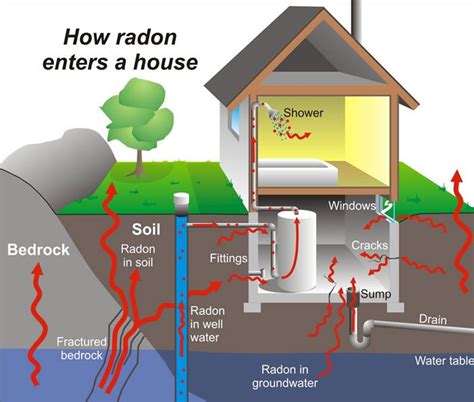Radon Test Preparation: Avoid Costly Mistakes
Radon, a naturally occurring radioactive gas, is a significant health concern for homeowners. Exposure to high levels of radon can increase the risk of lung cancer, making regular testing crucial. However, improper preparation for a radon test can lead to inaccurate results, wasted money, and potentially dangerous delays in mitigation. This guide will help you avoid costly mistakes and ensure an accurate and reliable radon test.
What is a Radon Test and Why is Preparation Important?
A radon test measures the concentration of radon gas in your home's air. Accurate results depend on several factors, including proper test placement, environmental conditions, and avoiding actions that might interfere with the test. A poorly prepared test can lead to a false-negative result (showing low radon levels when high levels actually exist), delaying crucial mitigation efforts. Conversely, a false-positive (showing high levels when they are low) could result in unnecessary and expensive mitigation work.
Common Mistakes to Avoid Before a Radon Test
Several common mistakes can compromise the accuracy of your radon test. Let's delve into some key areas to avoid:
1. Improper Test Location: Where should I place my radon test?
This is perhaps the most crucial aspect of preparation. Radon tends to concentrate in lower levels of the home, so placing the test in an upstairs bedroom might yield inaccurate results. The ideal location is typically a frequently used area in the lowest livable level of your home, such as a basement or crawlspace, away from any windows or doors that could allow for outside air infiltration. Avoid areas with high air exchange rates, like near HVAC vents or fireplaces. The Environmental Protection Agency (EPA) provides detailed guidelines on optimal placement, consult their resources for precise recommendations.
2. Short Testing Period: How long should I run a radon test?
Radon levels fluctuate naturally, so a short test period can provide a misleading result. Most short-term tests should run for at least 48 hours, and preferably 72 hours, for accurate results. Long-term tests (3-12 months) offer a more comprehensive picture of your home's average radon levels, and the results are considered very reliable. Following the recommended testing duration is paramount for accurate interpretation of the results.
3. Interference from Other Activities: Can I still use the house normally?
While you can continue living normally during a radon test, certain activities could interfere with the results. Avoid anything that dramatically alters air circulation in the testing area. This includes running exhaust fans for prolonged periods in the basement, leaving windows or doors open, or operating a high-powered air purifier or dehumidifier near the test kit. Minimize these activities, especially during the critical testing period, for the most accurate reading.
4. Ignoring Environmental Factors: Does weather affect the test?
Extreme weather conditions, such as heavy rain or high winds, can impact air pressure within your home and, consequently, radon levels. While you can't control the weather, it is important to note any significant weather events during the testing period. This information might help interpret the results and decide whether a repeat test is necessary.
5. Choosing the Wrong Type of Test: What kind of radon test is right for me?
Different types of radon tests exist, each with its advantages and disadvantages. Short-term tests are quicker and less expensive, suitable for quick assessments. Long-term tests provide a more comprehensive picture over a longer period. Choose the right test type based on your needs and budget. It's recommended to consult with a radon professional who can guide you based on your specific situation.
What to do After the Radon Test?
Once your radon test is complete, carefully follow the instructions for submitting the device or recording the results. Interpreting the results accurately requires understanding the levels of radon considered safe according to EPA standards. If you find elevated radon levels, act immediately. A certified radon mitigator can assess your situation and recommend the best course of action to reduce radon levels in your home.
By following these guidelines, you can avoid costly mistakes and ensure accurate radon testing. Remember, protecting your family's health is paramount, and a reliable radon test is the first step towards a safer home environment.

